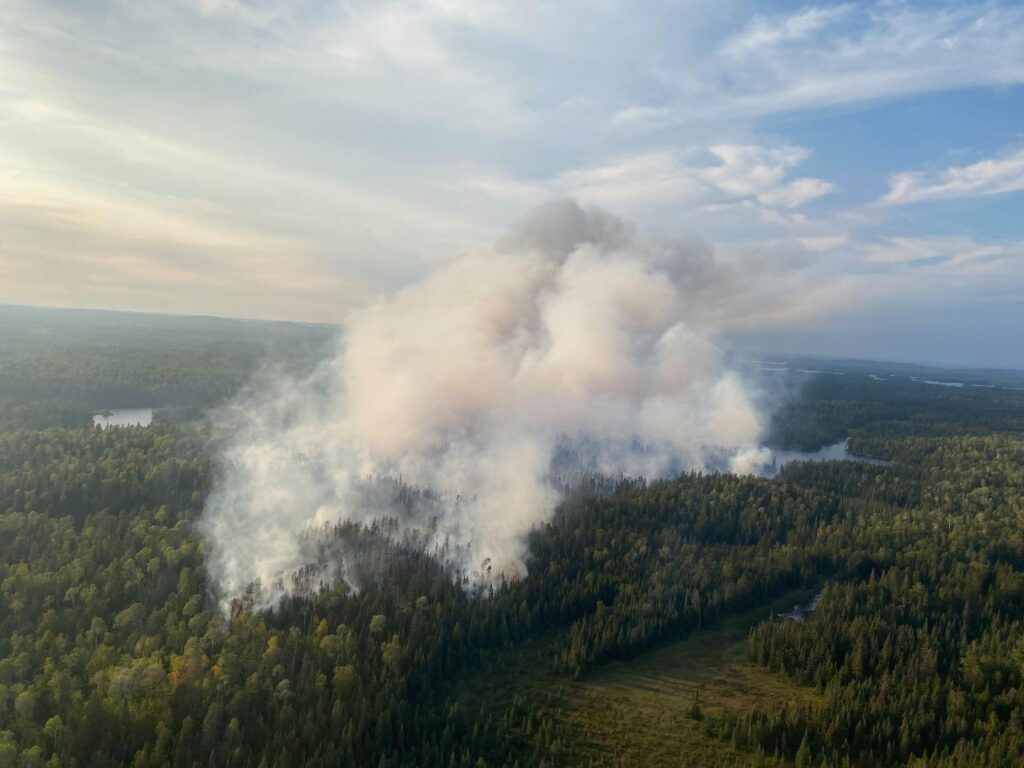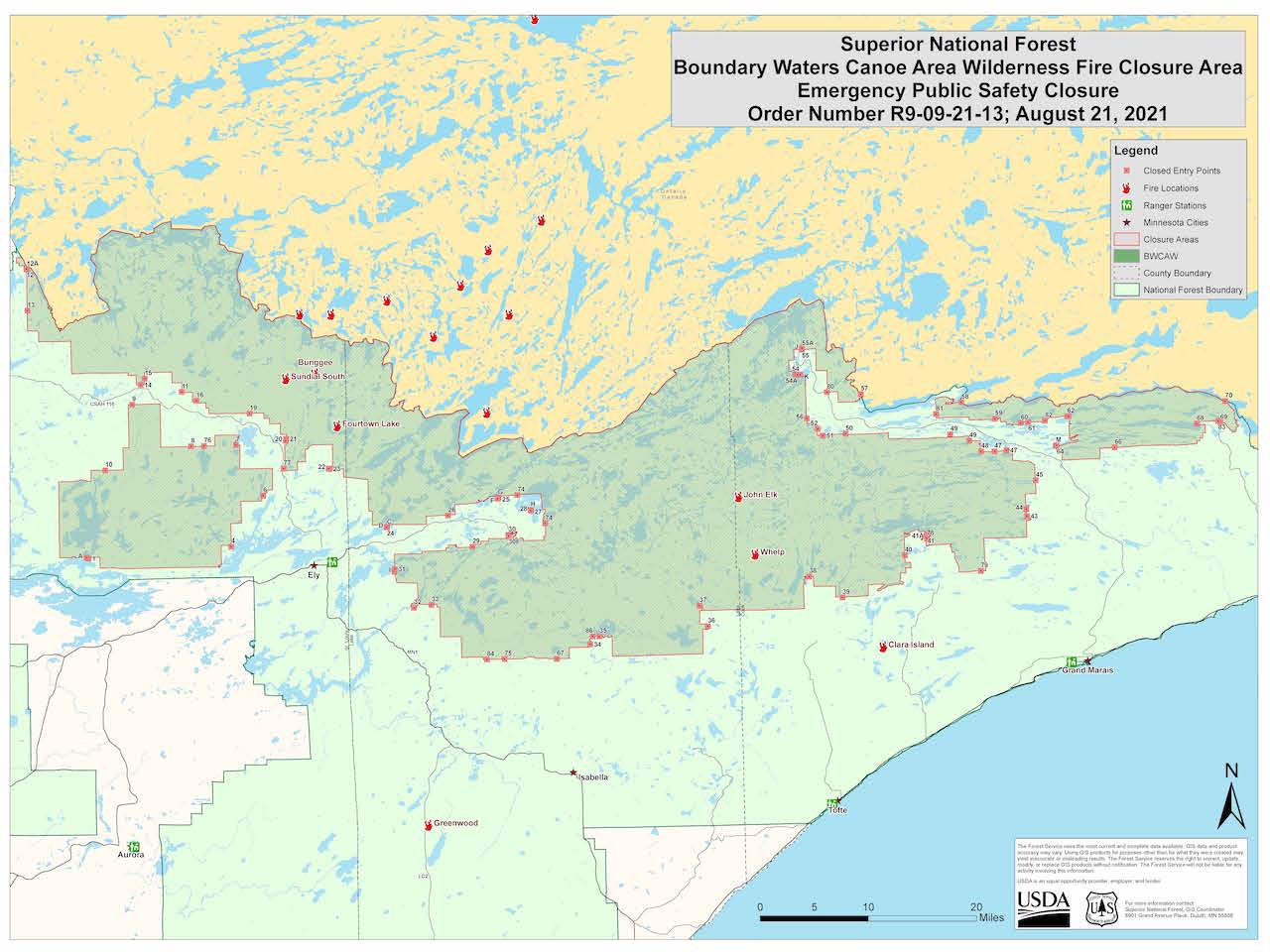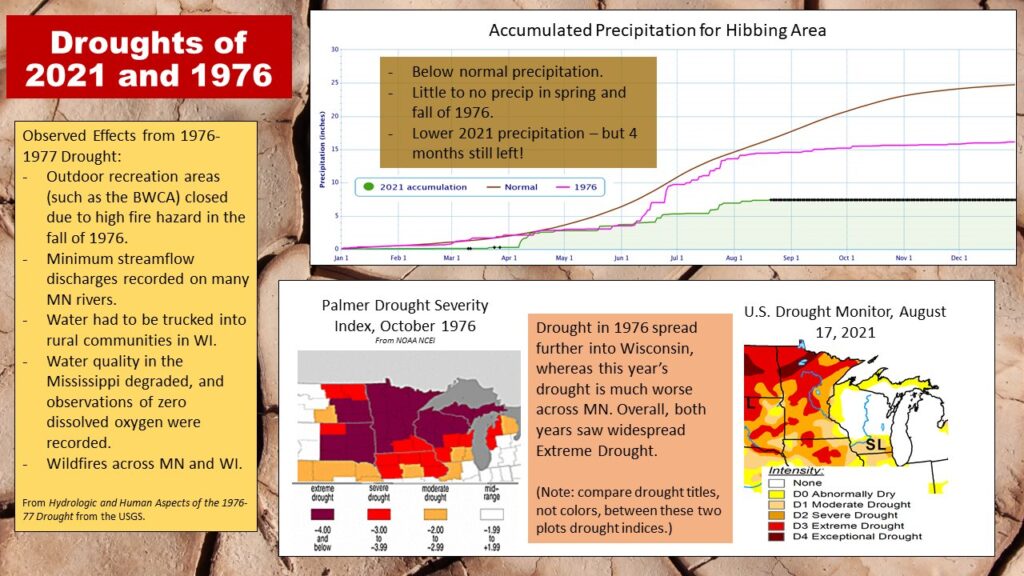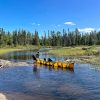
by Greg Seitz
The U.S. Forest Service has closed the entire Boundary Waters Canoe Area Wilderness to visitors for at least until September 3, as wildfires rage and few firefighting resources are available. Rangers have been traveling through the wilderness by canoe, boat, and float plane, informing visitors that they must leave.

“These emergency restrictions are necessary for the public’s health and safety due to the vicinity of fires and extreme drought conditions in the Superior National Forest,” the closure order reads.
The closures come as the Greenwood Fire continues to grow, currently at about 9,000 acres, with no containment yet. Several other fires are also burning on the forest, with conditions windy, dry, and dangerous. The John Ek Fire, located in the heart of the Boundary Waters wilderness, has grown to over 700 acres.
The last time such an order was issued was in 1976, when another historic drought gripped the region. The wilderness was also closed for the first few weeks of the 2020 paddling season due to COVID-19. No new wilderness entry permits are being issued at this time. “We did not make this decision lightly. We understand it will have significant impacts on business and our visitors. Thank you for your cooperation and understanding.”
The closure will be in place for at least a week, until August 28, when officials will reevaluate the situation. All permits for this time period have been canceled, and holders will receive full refunds.

Focus on firefighting
The United States is currently at the highest possible level of wildfire activity. That means there are many fires burning nationwide, and most firefighting resources, like crews, engines, bulldozers, and aircraft are already committed to other fires. It also means it can be difficult to get adequate resources.
No firefighters are currently on the ground in the wilderness because of difficult access and concerns about safety. Airplanes have been dropping water on the fires to help contain them. Outside the wilderness, aircraft remain critical to fighting the Greenwood Fire, and additional firefighters are continuing to arrive from elsewhere.
Patty Johnson, east zone fire management officer on Superior National Forest said in a public meeting on Sunday, “These areas haven’t burned for probably 150 years. they’re falling apart, they’re converting to spruce and fir and balsam, and they want to burn, that is ecologically they would typically do.” They also cited drought reports that are significantly higher than the conditions that led to the Pagami Creek Fire which burned 93,000 acres in 2011.
The Greenwood Fire is currently the focus of firefighting efforts. It has continued to grow each day, crossing Highway 2. Since last week, the fire has primarily spread to the north and west.
Contacting campers
Rangers were patrolling the wilderness on Sunday, still finding campers and asking them to leave, reported MPR News. The Forest Service said, by and large, most campers were understanding and cooperative.
One ranger shared the challenges of finding thousands of visitors across thousands of acres.
“For instance, a lake that has maybe four different portages, that you can come and go from out of that one lake — you can paddle it in the morning and make sure everyone’s gone and come back in the afternoon and there might be a new crop of people in there,” said Cathy Quinn, a Forest Service wilderness specialist. “So we’ve been going back over some lakes, both … physically on the ground with our crews, but then also re-sweeping or pre-sweeping with aircraft as well.”
The agency says the effort is not an evacuation, because other closures previously had ensured no campers were able to get in harm’s way. But with the full forest focused on a couple big fires, and the ongoing threat of new blazes, they needed to clear the wilderness.

Historic drought, historic restrictions
This year’s drought has driven the dangerous fire conditions. The previous full Boundary Waters closure in 1976 also came during a severe drought. The Forest Service has said current drought conditions on the Superior National Forest are extreme, even compared to their weather records stretching back to the 1970s.
Wilderness News reported on the drought, fires, and closures in 1976:
Timber-dry conditions prevailed in the BWCA as in much of Minnesota from early August until late autumn. During most of September and October the BWCA was entirely closed to travel for the first time ever. A BWCA fire which extended over more than 1,000 acres flared up in late August west of the Gunflint in the Saganaga, Seagull, and Magnetic Lakes area. More than 200 campers were evacuated. Of the roughly 350 firefighters on the blaze, 150 had been flown in from Washington and Oregon, 40 from Wisconsin, 40 from Missouri, and 20 from Michigan. World War II era B17 and B26 airplanes dumped 2,000 gallon loads of water and chemicals on the fire. Considering the extent of the severe drought, it is a credit to the Forest Service and users that the BWCA did not experience much more extensive loss to fire in 1976. – Wilderness News, Winter 1976-1977 (PDF)

Outfitters help out
The closure has forced guides and outfitters to shut down, cancel reservations, and help safely escort people from the wilderness. Coming during a popular time of the paddling season, it will make a dent on many businesses. On the Gunflint Trail, outfitter Andy McDonnell of Tuscarora Lodge and Outfitters shared a short video with an update and his perspective.
“I think it was a good decision,” he said. “Things were pretty out of control.”
He said they had recently sent customers to Little Saganana Lake and nearby lakes, which were close to the John Ek Fire, which grew from three acres to more than 700 acres almost overnight. “It wasn’t much fun to think about all those people out there when that fire was blowing up just south of them,” McDonnell said.
Jason Zabokrtsky, who owns Ely Outfitting Company, told MPR News “…to have sort of this immediate closure and have to tell somebody who’s traveled from Texas or California, and are standing in front of us ready to go out for a week in the woods, that actually everything’s changed and your Boundary Waters vacation is off, is really difficult.” If the closure is lifted in a few days, outfitters worry that the trip cancellations may continue, along with the misconception that the entire 1 million acre wilderness is on fire.
More information:
- Ongoing updates from Superior National Forest
- Greenwood Fire – InciWeb
- John Ek Fire – InciWeb
- Whelp Fire – InciWeb
















